Nicola Anselmi
A Self-Replicating Single-Shape Tiling Technique for the Design of Highly Modular Planar Phased Arrays -- The Case of L-Shaped Rep-Tiles
Aug 18, 2022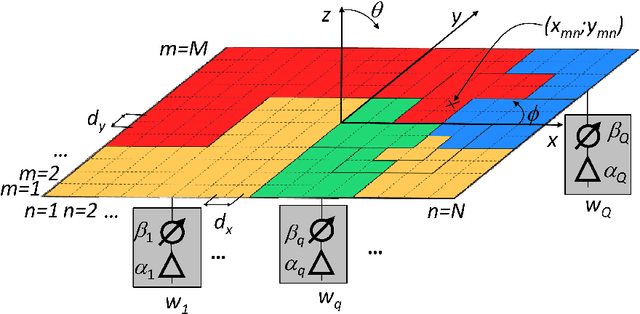


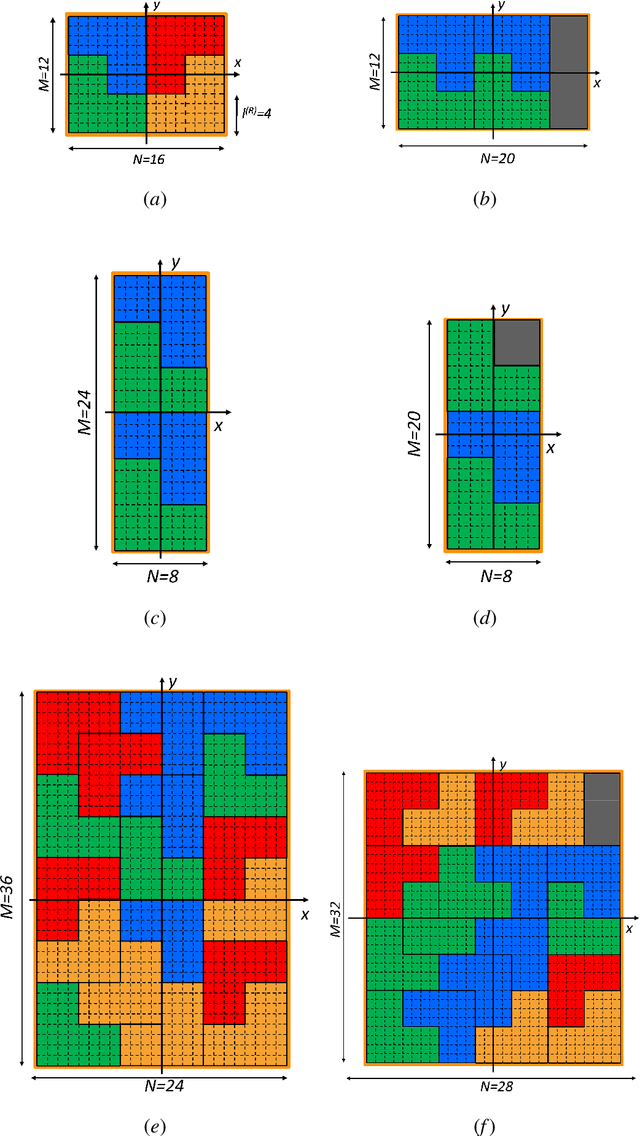
Abstract:The design of irregular planar phased arrays (PAs) characterized by a highly-modular architecture is addressed. By exploiting the property of self-replicating tile shapes, also known as rep-tiles, the arising array layouts consist of tiles having different sizes, but equal shape, all being generated by assembling a finite number of smaller and congruent copies of a single elementary building-block. Towards this end, a deterministic optimization strategy is used so that the arising rep-tile arrangement of the planar PA is an optimal trade-off between complexity, costs, and fitting of user-defined requirements on the radiated power pattern, while guaranteeing the complete overlay of the array aperture. As a representative instance, such a synthesis method is applied to tile rectangular apertures with L-shaped tromino tiles. A set of representative results, concerned with ideal and real antenna models, as well, is reported for validation purposes, but also to point out the possibility/effectiveness of the proposed approach, unlike state-of-the-art tiling techniques, to reliably handle large-size array apertures.
Array Antenna Power Pattern Analysis Through Quantum Computing
Jul 31, 2022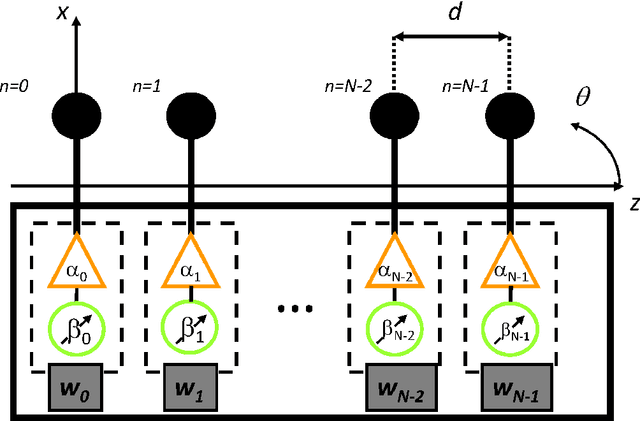
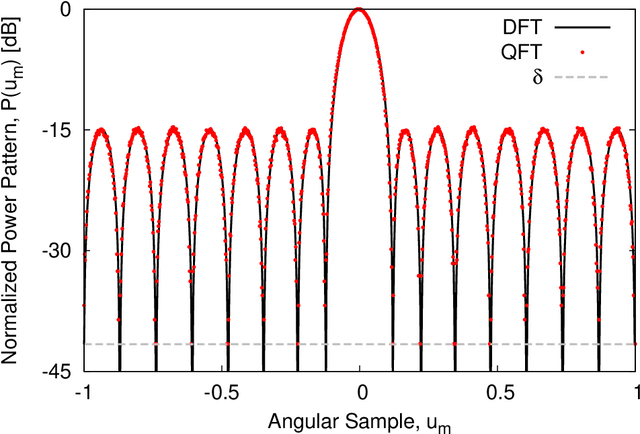
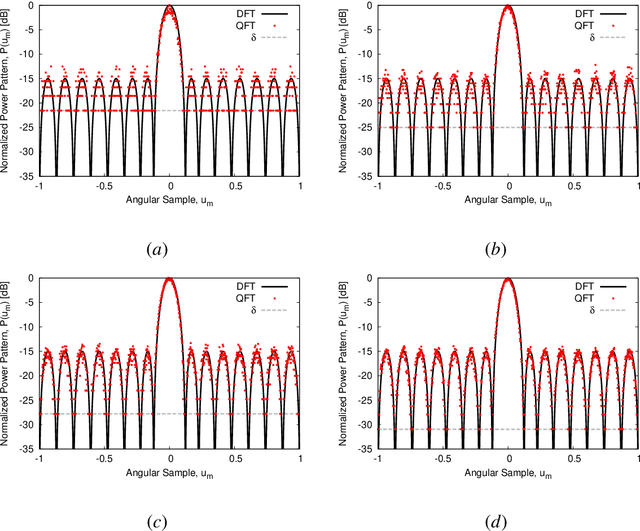
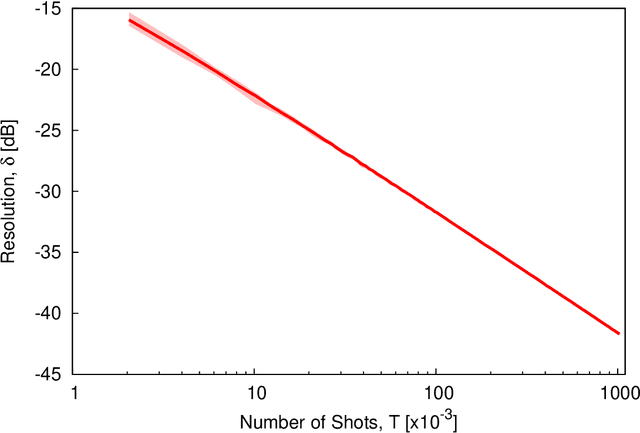
Abstract:A method for the analysis of the power pattern of phased array antennas (PAs) based on the quantum Fourier transform (QFT) is proposed. The computation of the power pattern given the set of complex excitations of the PA elements is addressed within the quantum computing (QC) framework by means of a customized procedure that exploits the quantum mechanics principles and theory. A representative set of numerical results, yielded with a quantum computer emulator, is reported and discussed to assess the reliability of the proposed method by pointing out its features in comparison with the classical approach based on the discrete Fourier transform (DFT), as well.
Modular Sparse Conical Multi-beam Phased Array Design for Air Traffic Control Radar
Aug 18, 2021



Abstract:The design of a conical phased array antenna for air traffic control (ATC) radar systems is addressed in this work. The array, characterized by a fully digital beam-forming (DBF) architecture, is composed of equal vertical modules consisting of linear sparse arrays able to generate on receive multiple instantaneous beams pointing along different elevation directions. The synthesis problem is cast in the Compressive Sensing (CS) framework to achieve the best trade-off between the antenna complexity (i.e., minimum number of array elements and/or radio frequency components) and radiation performance (i.e., matching of a set of reference patterns). Towards this aim, the positions of the array elements and the set of complex element excitations of each beam are jointly defined through a customized CS-based optimization tool. Representative numerical results, concerned with ideal as well as real antenna models, are reported and discussed to validate the proposed design strategy and point out the features of the deigned modular sparse arrays also in comparison with those obtained from conventional arrays with uniformly spaced elements.
A Bayesian Compressive Sensing Approach to Robust Near-Field Antenna Characterization
Jul 14, 2021



Abstract:A novel probabilistic sparsity-promoting method for robust near-field (NF) antenna characterization is proposed. It leverages on the measurements-by-design (MebD) paradigm and it exploits some a-priori information on the antenna under test (AUT) to generate an over-complete representation basis. Accordingly, the problem at hand is reformulated in a compressive sensing (CS) framework as the retrieval of a maximally-sparse distribution (with respect to the overcomplete basis) from a reduced set of measured data and then it is solved by means of a Bayesian strategy. Representative numerical results are presented to, also comparatively, assess the effectiveness of the proposed approach in reducing the "burden/cost" of the acquisition process as well as to mitigate (possible) truncation errors when dealing with space-constrained probing systems.
Antenna Array Thinning Through Quantum Computing
Jul 09, 2021



Abstract:Thinning antenna arrays through quantum Fourier transform (QFT) is proposed. Given the lattice of the candidate locations for the array elements, the problem of selecting which antenna location has to be either occupied or not by an array element is formulated in the quantum computing (QC) framework and then addressed with an ad-hoc design method based on a suitable implementation of the QFT algorithm. Representative numerical results are presented and discussed to point out the features and the advantages of the proposed QC-based thinning technique.
 Add to Chrome
Add to Chrome Add to Firefox
Add to Firefox Add to Edge
Add to Edge